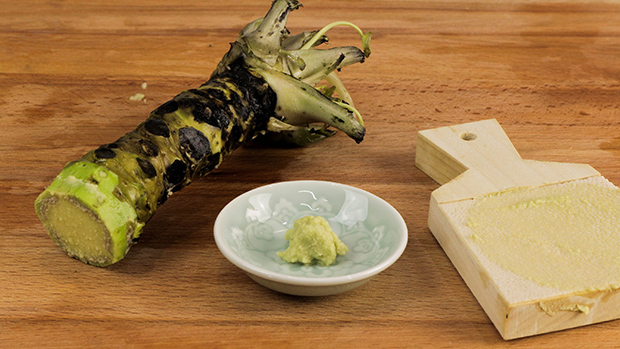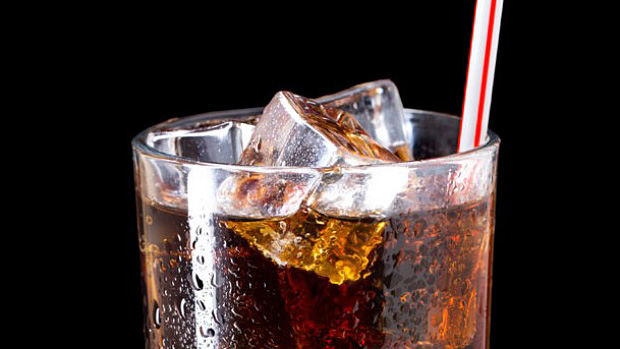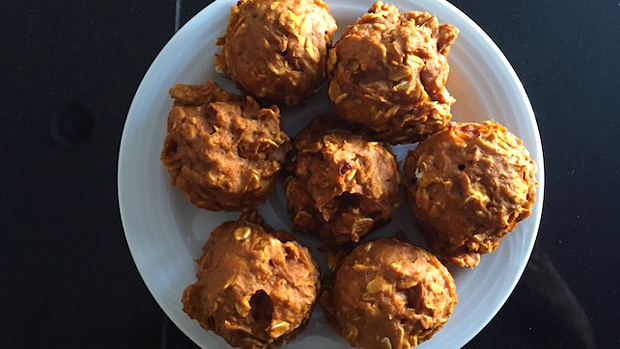How You're Going to Die
If heart disease doesn't kill you, then you're probably going to die of some type of cancer.
And several peer-reviewed, double-blind studies have concluded that death really interferes with ones ability to build muscle and chase women.
Not the happiest topic in the world, but this is what the Centers for Disease Control's morbidity statistics tell us: even if you avoid smoking and other obvious nasties, the specter of cancer is still highly likely to come sneaking up on you, scythe sharpened and ready to swing.
Luckily, we know how to fight the bastard.
Wasabi: Delicious Sushi Condiment and Cancer Fighter?
The evidence is pretty clear at this point: wasabi japonica (Japanese horseradish) looks like it decreases the incidence of many forms of cancer.
The power is in the glucosinolates.
According to Dr. Jonny Bowden, glucosinolates are basically the parent molecules of substances that increase human resistance to cancer. Dr. Mosbah Kushad notes that glucosinolates may suppress the growth of existing cancerous tumors. In this regard, wasabi – and horseradish in general – kicks the butt of even broccoli. Likewise, the isothiocyanates is wasabi have significant anti-inflammatory effects.
"As a super-spice, wasabi is tough to beat," says Dr. Tim Ziegenfuss. "It contains some very interesting fractions (6-(methylsulfinyl)hexyl isothiocyanate, 6-MITC), allyl isothiocyanate, AIT) that prevent inflammation, tumor progression, abnormal platelet clumping, and bacterial growth."
Sounds like we all need more wasabi in our diets. Too bad that's not likely to happen...
Are You Eating Real Wasabi, Gaijin?
Eat more sashimi, use lots of wasabi, and decrease your chances of getting the Big C. Sweet plan, but there's a problem. Two, actually.
First, fresh wasabi rhizome (the root part you consume) is expensive. In fact, if you don't see the chef grating it himself, then you're probably not getting the real deal. "Most Japanese steak houses don't serve real wasabi," says Ziegenfuss. "They toss out slurries of mustard, horseradish, and green food coloring."
Often, the real stuff is "cut" with cheapo European horseradish. There are some health benefits there, but it's not as potent as real wasabi japonica.
While Japanese researchers are on top of the research, the Japanese government doesn't help much, allowing a product to be called "wasabi" even if it's only 0.1% of the total product. And "pure wasabi" only means the product uses more than 5% wasabi.
Second, like a lot of other vegetables in the Brassica family, cooking wasabi degrades the myrosinase conversion enzyme necessary to reap the benefits of the spicy rhizome.
Solution: Supplemental Wasabi
Given the fact that wasabi is a love-it or hate-it kind of food – even if you can source the real stuff and consume enough of it daily, which is unlikely – supplementation is growing along with the positive research. Some think that wasabi may be the next big "superfood" you'll be reading about everywhere.
And maybe it should be.
Note: If you currently use Biotest Superfood, then no worries, you're already taking in wasabi (20% glucosinolates).
Research
- Kinae N, Masuda H, Shin IS, Furugori M, Shimoi K. Functional properties of wasabi and horseradish. Biofactors. 2000;13(1-4):265-9.
- Morimitsu Y, Hayashi K, Nakagawa Y, Horio F, Uchida K, Osawa T. Antiplatelet and anticancer isothiocyanates in Japanese domestic horseradish, wasabi. Biofactors. 2000;13(1-4):271-6.
- Watanabe M, Ohata M, Hayakawa S, et al. Identification of 6-methylsulfinyhexyl isothiocyanate as an apoptosis-inducing component in wasabi. Phytochemistry. 2003 Mar;62(5):733-9.
- Xu K, Thornalley PJ. Studies on the mechanism of the inhibition of human leukaemia cell growth by dietary isothiocyanates and their cysteine adducts in vitro. Biochem Pharmacol. 2000 Jul 15;60(2):221-31.
- Nomura T, Shinoda S, Yamori T, et al. Selective sensitivity to wasabi-derived 6-(methylsulfiny)hexyl isothiocyanate of human breast cancer and melanoma cell lines studies in vitro. Cancer Detect Prev. 2005;29(2):155-60.
- Morimitsu Y, Nakagawa Y, Hayashi K, et al. A sulforaphane analogue that potently activates the Nrf2-dependent detoxification pathway. J Biol Chem. 2002 Feb 1;277(5):3456-63.
- Hecht SS. Chemoprevention by isothiocyanates. J Cell Biochem Suppl. 1995;22:195-209.





